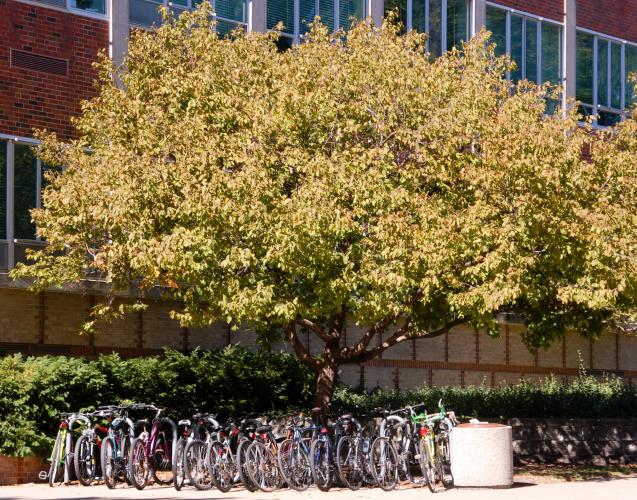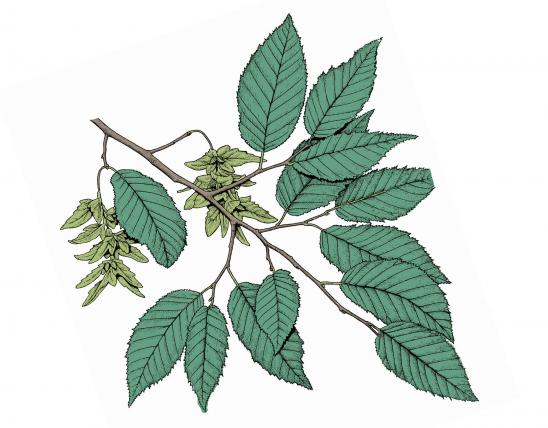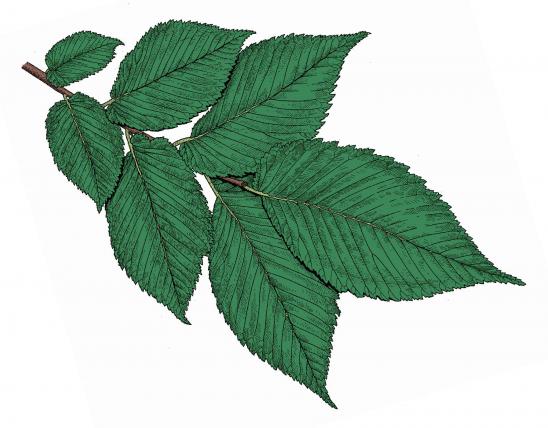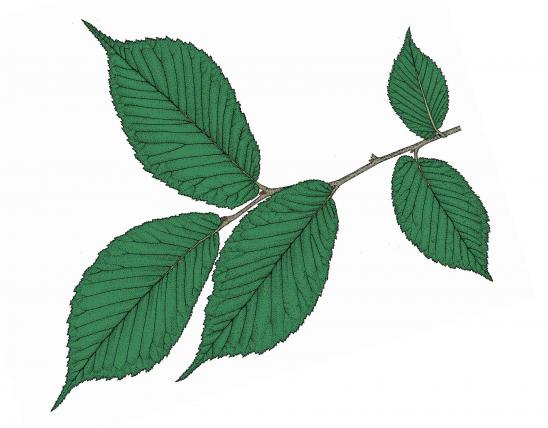
Eastern hop hornbeam is a small tree with wide, spreading branches.
Leaves are alternate, simple, blades 2½–4½ inches long, 1½–2½ inches wide, broadest at or below the middle; margin sharply and densely toothed; base often uneven; upper surface yellowish to dark green, dull; lower surface paler, hairy.
Bark thin, reddish gray, with narrow, platelike, tight scales; some trees with loose, shreddy scales.
Twigs usually slightly zigzag, hairy toward the tip, reddish brown to dark brown, pores small, not obvious.
Flowers in April–May, before the leaves, on male and female catkins and on the same twig.
Fruit in conelike clusters of overlapping, scalelike sacs, overall resembling hops (hence the name), 1½–2 inches long; each sac papery, white, and containing a single nut.
Height: to 24 feet.

Statewide, mostly excluding the far southeast corner and the central portion of the state’s western edge.
Habitat and Conservation
Occurs in fairly dry soil on rocky slopes, along bluffs, in upland woods, and rarely along streams. A common understory tree in oak-hickory forests, along with flowering dogwood, sassafras, redbud, and serviceberry. Sometimes called ironwood because of the extreme hardness of the wood. Because the catkins of this tree are such an important winter food for ruffed grouse, this species is important to have in areas where ruffed grouse populations are being encouraged.
Human Connections
One of the hardest and strongest woods, harder than oak, hickory, locust, and more, surpassed only by flowering dogwood — hence its name “ironwood.” Because the tree is small, use is limited to tool handles, mallets, and posts. It makes a nice ornamental tree. In the past, the bark was used medicinally.
Ecosystem Connections
Birds, including quail and wild turkey, eat the fruits. The catkins and buds are the most important late autumn, winter, and early spring food for ruffed grouse.




































